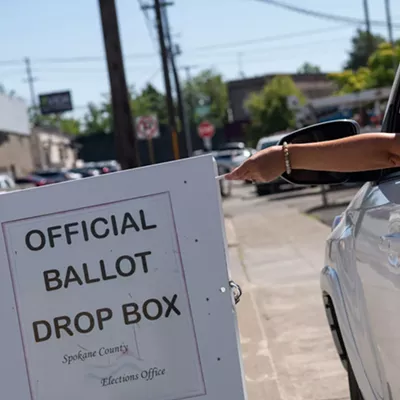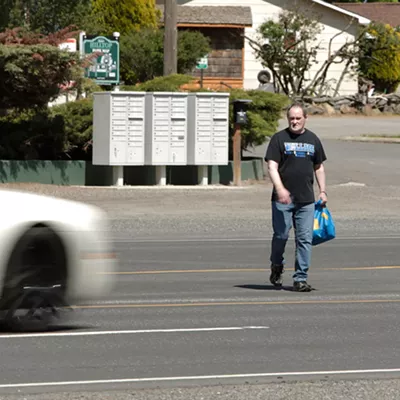During the heyday of bebop, jazz icon Thelonious Monk was known for his unusual hats, his vague oracle-like pronouncements and his innovative and percussive style at the piano. Born in North Carolina, Monk came to New York with his family as a young child and learned to play stride piano, inspired by his neighbor, James P. Johnson. He worked his way up through the city's jazz clubs in the 1940s and '50s until a collaboration with John Coltrane in 1957 brought them both the acclaim they deserved. When his mental illness drove him into retirement in 1973, the jazz world lost one of its unique melodic voices, a man many would call a genius. He spent his remaining years in seclusion at home until his death in 1981.
Trumpeter Don Sickler's story couldn't be more different than the reclusive Monk's, yet the two are now inextricably linked in the minds of many jazz aficionados. Born and raised in Spokane, Sickler graduated from Shadle Park High School and Gonzaga University before venturing off to New York for a graduate degree from the Manhattan School of Music. Opportunities opened for him in the music publishing world, but he maintained his performing contacts as well, playing with some of the legends of jazz like Dizzy Gillespie, Art Blakey and "Philly" Joe Jones. When he met Nellie Monk, the famous pianist's widow, Sickler's experience with the business side of jazz -- along with his relationships with musicians -- put him in the ideal position to help protect, preserve and publish Monk's musical legacy.
"I've been involved with the Monk family since the '80s," he says. "I started out by protecting his music from falling into the public domain when [the copyright] came up for renewal."
From there, he went on to publishing full scores of Monk's arrangements, music that never had been written out fully.
"When Monk performed, there was no book to pass around to the other musicians," he explains. "There was no [written] music. He just sat down and started to play."
So, how does one publish a score for music that's never been written down? Sickler listens to the original recordings and then transcribes each note of each part. The process takes a lot of patience, along with keen ears.
"That's one of the good things about growing up in Spokane," he laughs. "I couldn't get the printed music for the arrangements I wanted to play back in high school and college, so I had to transcribe them from the records. I developed a good ear."
Sickler formed his own music publishing company, Second Floor Music, and now publishes the work of more than 200 jazz musicians. Although he knows there's a lot to be learned from transcribing, Sickler says he's trying to save today's up-and-coming musicians the trouble. "What was important to me was making sure that the next young guy coming along doesn't have to do that."
Spokane Jazz Orchestra Music Director Dan Keberle met up with Sickler at a convention last year and the two began discussing a concert program dedicated to Monk's music. Sickler agreed to a collaboration, and the result is "The Magic of Thelonious Monk," to be presented at the Met on Saturday evening by the SJO.
"This program is going to be my favorite of my eight years as SJO music director," says Keberle. "There are very few musicians in the history of jazz who have had such a far-reaching influence on the style and development of jazz as Thelonious Monk." Keberle points to Monk's use of harmony as an influence on later visionaries like John Coltrane, Charlie Parker and Miles Davis.
Because Monk played primarily with small ensembles, this concert will feature arrangements for sextet and octet, along with 10-piece big band, like the one Monk formed for a concert series at New York's Town Hall.
Keberle says, "We are doing several pieces from this [series], as well as arrangements for full big band of some of Monk's most famous and beloved tunes such as 'Straight No Chaser,' 'Round Midnight,' 'Monk's Dream,' 'Well You Needn't,' 'Bemsha Swing' and 'Epistrophy.' "
As for Sickler, the concert means a long-awaited homecoming. Since he left for New York in the late '60s, he has never returned to his hometown. It's not that he has anything against Spokane, mind you, it's just that there are, well, so many things to do in New York.
"It's been wild," he says of the last 35 years. "New York is where everybody comes, so you can do things in New York that you can't do in Spokane." Among those are playing regularly with jazz greats and counting people like Bill Cosby among your friends.
"The first time playing with these big guys, and they're pushing you and they've locked into what you're doing... It's like a conversation, with everyone contributing. Once I got to play with these great artists, I was spoiled for life."
Still, he's looking forward to seeing Spokane again, and he knows this is where his roots lie. "I've been very lucky," he admits. "I've been in the right place at the right time. But I know I'm just a kid from Spokane."
















